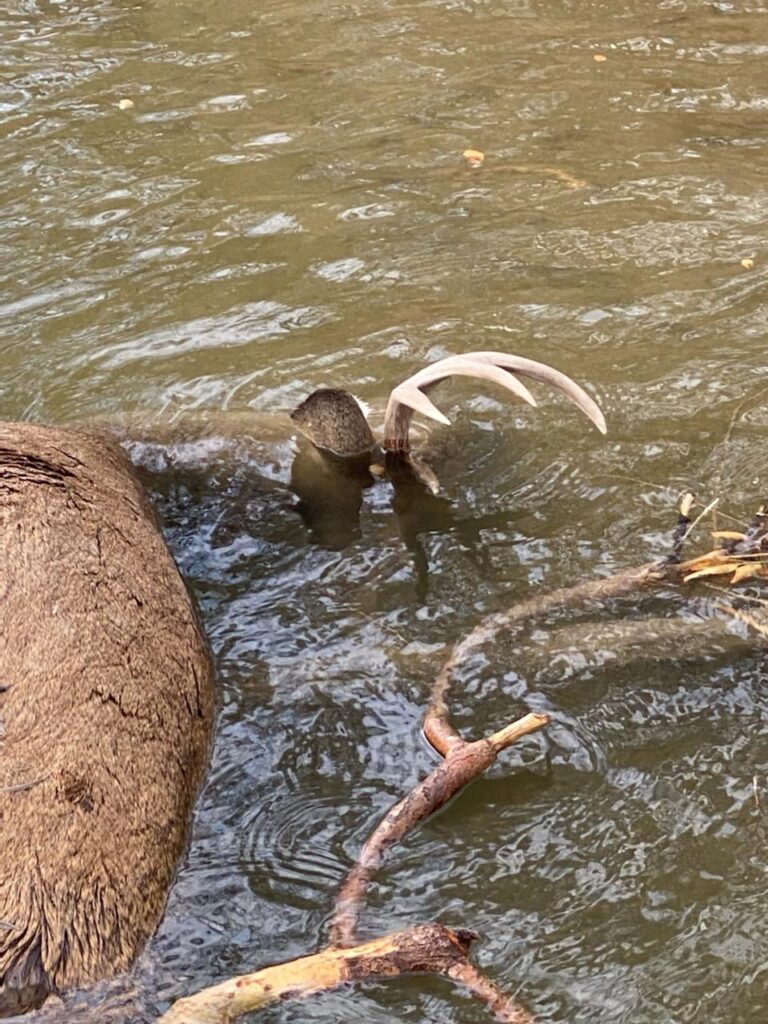

It is a sad sight that has become all too common throughout western North Dakota, even spreading east of U.S. Highway 83 and the Missouri River. Dead deer. Lots of them.
Most are found lying in water where, in the final stages of life, they were trying to cool down from intense fever brought on by epizootic hemorrhagic disease, better known as EHD. The outbreak is so evident, so widespread, that the North Dakota Game and Fish Department is offering deer-gun-hunting license refunds for those hunters who request them.
The disease is spread by the bite of a tiny midge, similar in size to what is known as “no see ‘ums.” EHD is a naturally occurring virus that is often fatal to white-tailed deer. Mule deer, which are also present in North Dakota, are much less susceptible to EHD. The midges spread the disease until cold conditions kill them off.
“We’ve had a couple of good frosts across the state, so we shouldn’t be adding any animals at this point dying from the disease,” said Casey Anderson, North Dakota Game and Fish Department wildlife division chief.
"We've had a couple of good frosts across the state, so we shouldn't be adding any animals at this point dying from the disease."
Casey Anderson, Wildlife Division Chief, North Dakota Game and Fish Department
A year ago EHD was identified in relatively small areas, primarily in the southwest part of the state. This year the area of the state affected by the disease has expanded considerably with dead or dying deer documented from the northwest corner of the state to southwest of Jamestown, an area encompassing 22 of the state’s 38 deer hunting units.
The extent of the spread of EHD became readily apparent after the fall hunting seasons got underway. Pheasant hunters, who often prefer hunting along drainages and near water, encountered affected deer with regularity. Landowners too have made many reports to Game and Fish regarding dead deer found on their property.
As of October 26, Game and Fish has processed more than 1,000 requests for license refunds with more in the process and expected. A total of 72,200 licenses were issued statewide. All requests for refunds must be received by Game and Fish prior to the start of the season. The state’s deer gun season runs November 5-21.
"One of the biggest things going forward is that those areas affected are probably going to see outbreaks over time. The potential for an outbreak is always there now. EHD is kind of a cyclical thing."
Anderson, North Dakota Game and Fish Department
“The outbreak was significant enough that hunters will notice less deer in some areas,” said Anderson. “All units were not evenly affected.”
Hunters that traditionally hunt certain areas of their chosen unit may or may not discover it was affected by EHD. The most severe outbreak has been identified along the Missouri River from Bismarck to the South Dakota border.
“The Missouri River is a much more concentrated area of human population and a good deer population too,” said Anderson. “It’s kind of a perfect storm for deer to be found.”
Anderson said his office has received numerous pictures of dead deer from hunters and landowners alike, but the extent of the die off may not be fully known for several months.
“It’s hard to tell the complete impact on the deer herd until we can do some surveys this winter,” explained Anderson. “One of the biggest things going forward is that those areas affected are probably going to see outbreaks over time. The potential for an outbreak is always there now. EHD is kind of a cyclical thing.”
Anderson said deer that survived contact with EHD have some degree of immunity. Fawns they produce will also have some immunity, but that immunity is reduced with each generation of deer.
“In about seven to 10 years most won’t be immune anymore,” stated Anderson.
How quickly the state’s deer herd can rebound from mortality caused by EHD, said Anderson, is primarily dependent upon good habitat for fawn production and survival.